The month of July is not only meant hot and humid weather in Kyoto, it also meant that is going to be jam-packed with tourists especially from the 14th – 17th July when it is the peak period of the one month long festival of the Gion Matsuri.
The Gion Matsuri is a traditional festival which has been held at the Yasaka Shrine for more than 1100 years in Eastern Kyoto. It is also known as one of three most famous festivals in Japan. The festival was first held in 869 AD when a plague swept the country, the people belived this is the curse of Gozu Tenno (a deity also known as Gion Tenjin). Sixty-six pikes representing the provinces of that time were erected at Shinsen-en Garden south of where Nijo castle now stands. The Gion gods were being celebrated and portable shrines were paraded through the streets as the people prayed for an abatement of the pestilence. This was how the Gion Goryo originated. (Reference: 2010 Yoiyama and Parade Guide)
The highlight of the festival is the Yamaboko Junko, also known as the Float Parade which was held on the 17th of July, our 2nd day in Kyoto. Together with my brother and his girlfriend, we headed for Shijo-Karasuma Dori the starting point of the Yamaboko Junko, which is within walkable distance from Kyoto Station.
The place was jam packed (including fastfood joints next to the road) early in the morning with Japanese and lots of tourists. Parts of Shijo St., Kawaramachi St. and Oike St were being closed for the event. There was much squeezing and pushing in order move around the area. Save for the starting ritual known as Shimenawa-kiri (Feston cutting ceremony) held at the start point, you can watch much of the parade from many other vantage points further down the parade route and avoiding the bigger crowds along Shijo street.
The floats were being led by the Naginata Boko each year. Unlike other floats, it does not need to draw lots for its position. What is unique about the Naginata float is that it is the only float that features a real human child and it features a "Naginata" (long sword that was made by Munechika (today, a replica wis used). The sword is swept from side to side as the float advances forward to sweep away disease and evil. The tip of the naginata however is not pointed towards Yasaka Shrine or Gosho.
The taller floats are known as Hoko floats and the smaller ones are known as yama floats. Hoko floats were equipped with huge gigantic wooden wheels and accompanied by a 30-50 pullers who would pull these gigantic floats throughout the parade. A hook float can be as tall as 25 metres including the top of the roof and weigh about 8.5-12 tons at the time of the parade.Roof riders, as they were being called are positioned on top of the hoko floats to steady the float and clear obstacles such as power lines.
The floats were adorned with priceless artworks, tapestries, textiles and even national treasures. Some of the tapestries were very old such as a 16th Century Belgian painting (Niwatori Boko) or dolls that bear inscriptions that were carved in 1563 (Hashibenkei Yama). If you are interested in seeing the floats as a static display, you could see them being displayed for the public around Central Kyoto. There will be night markets around these floats during the 3 days before the parade.
The floats were accompanied by music performed by Gion bayashi musicians on the floats itself which heightens the excitement. During the festive season, one can hear the music being played throughout Kyoto Train Station. They are like the Christmas carol equivalent of Christmas.
After the parade, the floats were being disassembled to ensure that the spriits of disease that they have gathered are not released.
Although not taken by me, this video would show you some of the scenes of the Gion Matsuri Festival including the Yoiyama night markets, the float parade and another procession that involves some floats from Yakasa Shrine of Gion. You can also hear the Gion bayashi music in the background.
This video features the Kita Kannon Yama float which is also known as the Nobori Kannon Yama. Enshrined in the float are images of the "Yoryu Kannon" (The Goddess of Mercy) and "Idaten" (a guardian deity). The process of turning the float, is called Tsujimawashi. Floats do not have a rudder to steer with, so plit bamboo or pole are being placed under the wheels and water was being applied to the wheels to allow them to slide while the floats are pulled from the side.
The last video is by UNESCO of the Gion Matsuri and the parade.


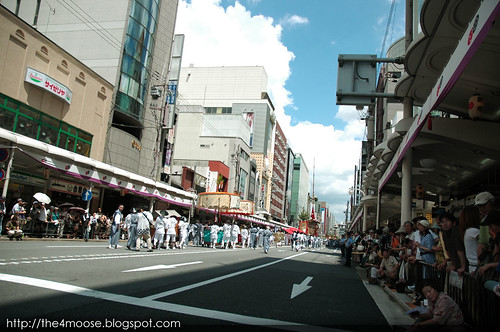
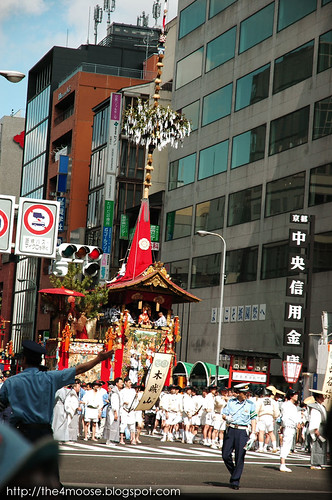
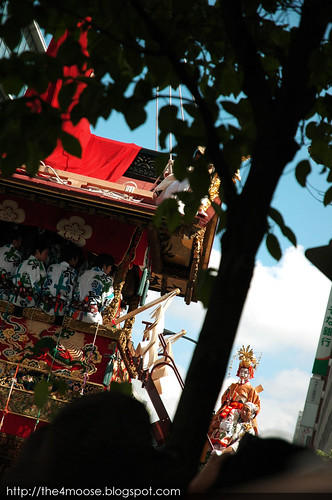

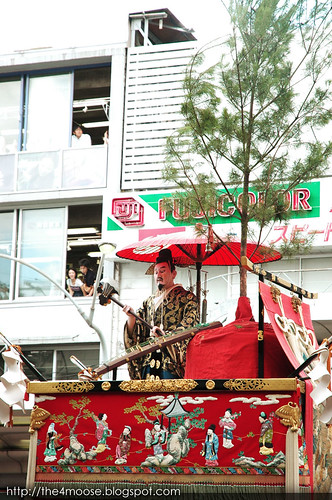
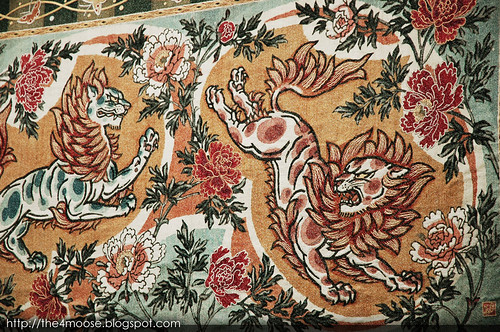

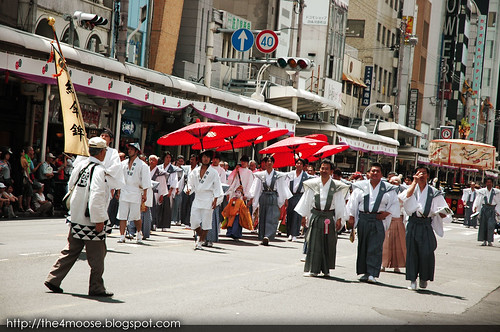
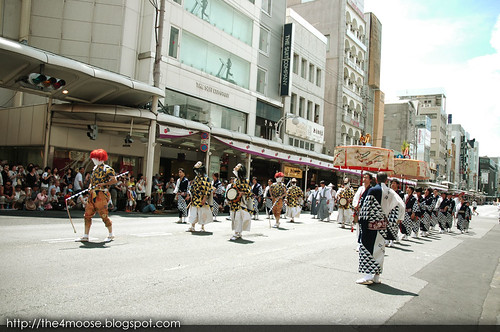














Did you go there because of the festival or was it a coincidence? Looks interesting...
ReplyDeletehi, didn't plan for it initially but I added it to the itinerary when I found out there is a festival going on. =)
ReplyDelete